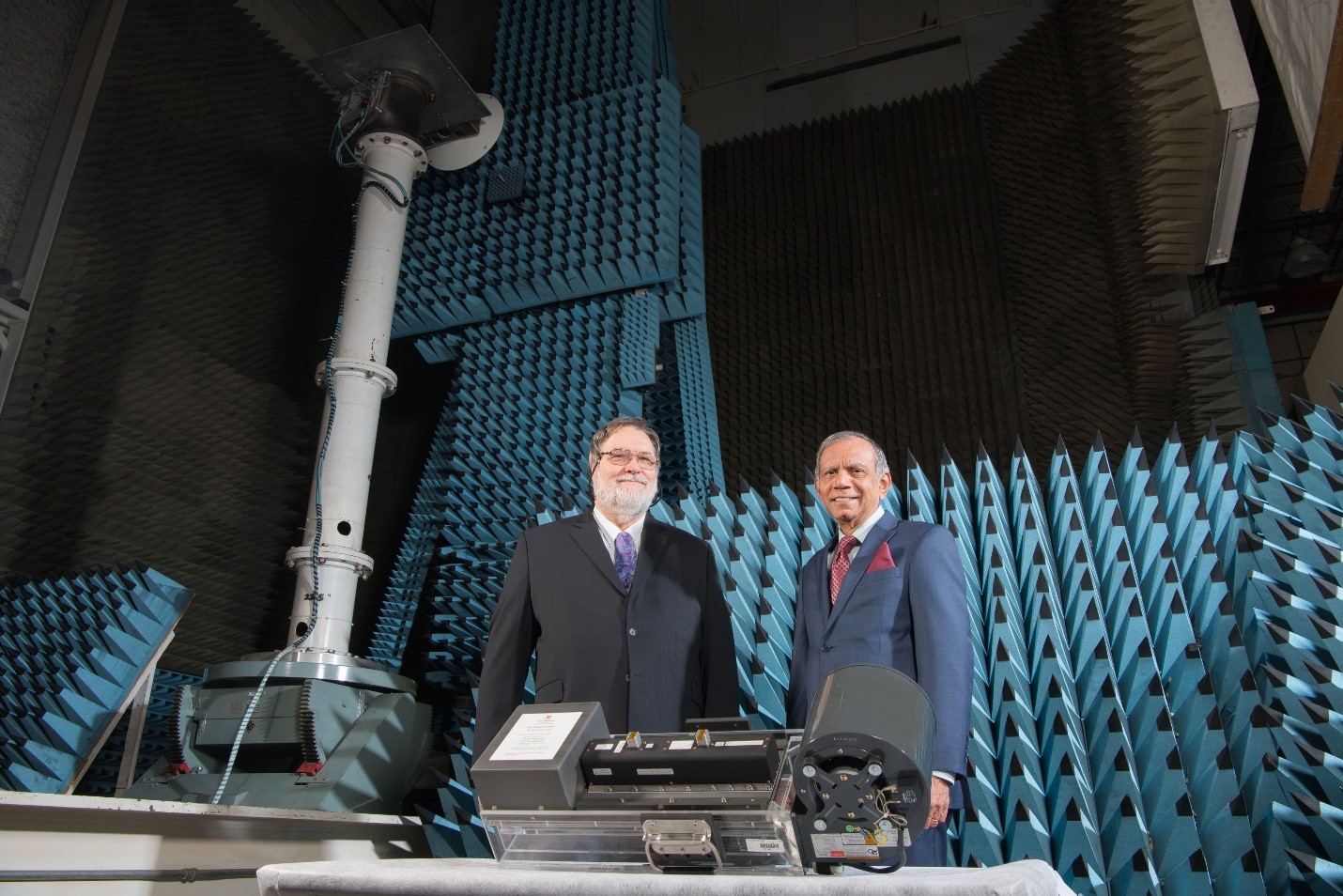
Space Technology Hall of Fame inductees, Dale Force and Dr. Rainee Simons, stand next to a 200-W Ka-band TWTA mounted on a cooling platform for lab testing.
The TWTA originally developed to meet the reliable data transmission needs of NASA’s near-Earth and deep-space missions has been the workhorse for telecommunications, radio science, and imaging radar systems on board every single science spacecraft that NASA has launched. NASA’s GRC pioneered the development of space TWTAs in partnership with L3 at several frequency bands (X-, K-, Ka-, and Q-band), which enabled transmission of science data at unprecedented data-rates.
Spin-off applications that provide societal benefits include timely meteorology weather alerts, satellite television broadcast, mobile phones, tele-medicine, and instant messaging, as well as high-speed internet service and cloud computing. The imaging capability enabled by TWTAs has resulted in satellites serving for the military as a sentry in the sky, guarding our nation.
Since the early 1990s, more than 90 percent of satellites launched have featured TWTA-based payload configurations—TWTAs are the amplifier of choice for nearly all space-to-Earth communication systems due to their breakthrough performance advantage, proven reliability, and capability of surviving in space over extended periods.
The technology has flown on several NASA missions including the Lunar Reconnaissance Orbiter, the Space Communications and Navigation (SCaN) Testbed on the International Space Station, Cassini, Kepler, Joint Polar Satellite System, and more. Furthermore, with significant commitment and investment from L3, the Q-band space TWTA that was developed through the above partnership with GRC was transformed to meet the commercial satellite communications market for the 5G—the fifth generation of wireless communications technology.
The Space Foundation has sponsored the Space Technology Hall of Fame since 1988, honoring scientists, engineers, and innovators for effectively adapting space technologies to improve the quality of life for all humanity. Induction into the Space Technology Hall of Fame allows innovators and researchers to be recognized for their contribution to space and beyond.



